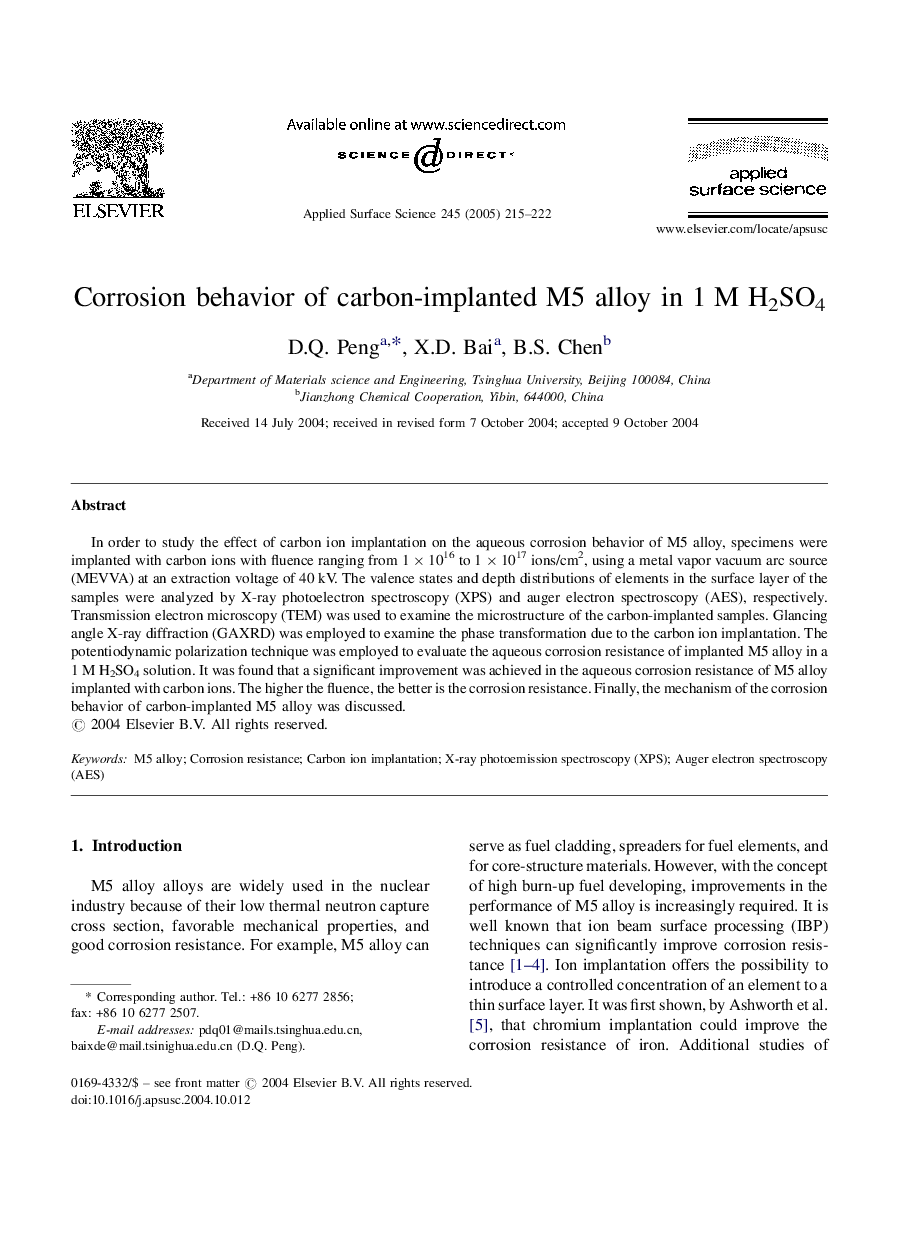| کد مقاله | کد نشریه | سال انتشار | مقاله انگلیسی | نسخه تمام متن |
|---|---|---|---|---|
| 9566803 | 1503712 | 2005 | 8 صفحه PDF | دانلود رایگان |
عنوان انگلیسی مقاله ISI
Corrosion behavior of carbon-implanted M5 alloy in 1Â M H2SO4
دانلود مقاله + سفارش ترجمه
دانلود مقاله ISI انگلیسی
رایگان برای ایرانیان
کلمات کلیدی
موضوعات مرتبط
مهندسی و علوم پایه
شیمی
شیمی تئوریک و عملی
پیش نمایش صفحه اول مقاله

چکیده انگلیسی
In order to study the effect of carbon ion implantation on the aqueous corrosion behavior of M5 alloy, specimens were implanted with carbon ions with fluence ranging from 1Â ÃÂ 1016 to 1Â ÃÂ 1017Â ions/cm2, using a metal vapor vacuum arc source (MEVVA) at an extraction voltage of 40Â kV. The valence states and depth distributions of elements in the surface layer of the samples were analyzed by X-ray photoelectron spectroscopy (XPS) and auger electron spectroscopy (AES), respectively. Transmission electron microscopy (TEM) was used to examine the microstructure of the carbon-implanted samples. Glancing angle X-ray diffraction (GAXRD) was employed to examine the phase transformation due to the carbon ion implantation. The potentiodynamic polarization technique was employed to evaluate the aqueous corrosion resistance of implanted M5 alloy in a 1Â M H2SO4 solution. It was found that a significant improvement was achieved in the aqueous corrosion resistance of M5 alloy implanted with carbon ions. The higher the fluence, the better is the corrosion resistance. Finally, the mechanism of the corrosion behavior of carbon-implanted M5 alloy was discussed.
ناشر
Database: Elsevier - ScienceDirect (ساینس دایرکت)
Journal: Applied Surface Science - Volume 245, Issues 1â4, 30 May 2005, Pages 215-222
Journal: Applied Surface Science - Volume 245, Issues 1â4, 30 May 2005, Pages 215-222
نویسندگان
D.Q. Peng, X.D. Bai, B.S. Chen,